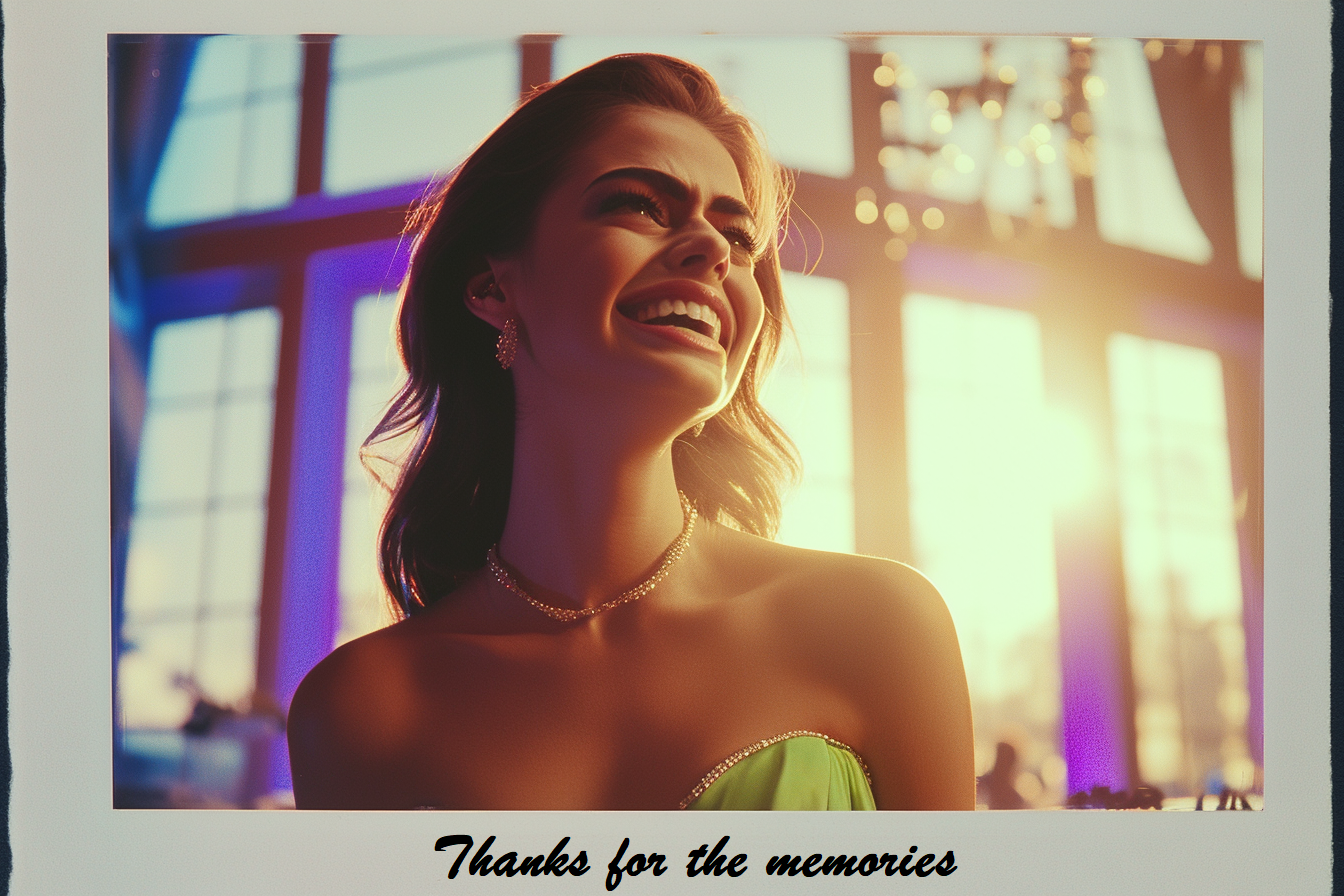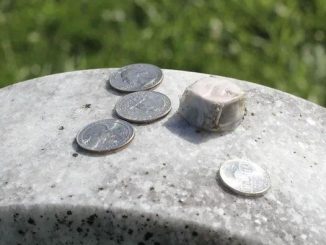
The morning air was crisp with the promise of a new day. George and I, bundled in our warmest coats, were on our usual walk, enjoying the quiet of our suburban street. The sun, a shy sliver peeking through the clouds, cast long shadows across the lawns. As we passed apartment building number 7, something caught my eye.
A small figure huddled beside a makeshift table, a handwritten sign propped against a stack of toys. Curiosity piqued, I approached the boy. He couldn’t have been more than eight years old, his face a mixture of determination and sadness.
“What are you doing?” I asked gently.
The boy, with eyes the color of a stormy sea, looked up at me. “Selling my toys,” he said, his voice small but resolute. “To help my dog.”
My heart sank. “Your dog?” I asked, confused.
He nodded, his lip trembling slightly. “My parents… they can’t afford to keep him anymore. They might have to take him to the shelter.”
The words hung heavy in the air. This child, barely out of toddlerhood, was facing a hardship that no child should ever have to bear. George, ever the pragmatist, gently inquired about the prices of the toys. They were ridiculously low, a testament to the boy’s desperation.
We couldn’t just walk away. We “bought” a few of his toys, though we had no intention of keeping them. Instead, we returned home with a renewed sense of purpose. We started knocking on doors, sharing the boy’s story with our neighbors. The response was immediate and overwhelming.
Mrs. Garibaldi, the elderly woman who always had a jar of cookies on her windowsill, donated a generous sum, her eyes brimming with tears. Mr. Thompson, the gruff gardener with a soft spot for animals, offered to mow the family’s lawn for the next month. Children, their faces alight with concern, emptied their piggy banks, their contributions ranging from a few coins to a dollar bill clutched tightly in their small hands.
News of the boy’s plight spread through the neighborhood like wildfire. Within hours, a small “fund” for the dog’s care had materialized. We dropped off the contributions that evening, a small bag overflowing with cash and good wishes.
The boy’s face, when he saw the money, was a picture of disbelief. His eyes widened, then welled up with tears. “Thank you,” he whispered, his voice choked with emotion. “Thank you so much.” His parents, initially hesitant, were overcome with gratitude.
As we walked away, a sense of warmth filled my heart. It was a reminder that even in the face of adversity, the human spirit could shine through. The simple act of kindness, of reaching out to a neighbor in need, had created a ripple effect of compassion and support.
That evening, as I tucked my own children into bed, I told them about the little boy and his dog. I explained that sometimes, even the smallest acts of kindness could make a big difference. “Remember,” I said, “we’re all connected. We’re all part of a community, and we need to look out for each other.”
The next morning, I woke up to the sound of birdsong and the gentle patter of rain. The memory of the boy’s grateful smile warmed my heart. It was a reminder that even in the darkest of times, there is always hope, and that the kindness of strangers can truly make a difference.
That day, I went about my business with a renewed sense of purpose, determined to be more mindful of the needs of those around me. The world, I realized, was full of small acts of heroism, waiting to be discovered. And in the quiet moments, I would remember the little boy and his dog, a testament to the enduring power of compassion and the unwavering kindness of the human spirit.
Minha melhor amiga me expulsou do casamento dela depois que o noivo pegou o microfone e apontou para mim

Quando entrei no casamento da minha melhor amiga Lily, eu estava pronto para celebrar seu dia mais feliz. Mas no final da noite, o noivo estava me acusando de sabotar tudo, enquanto Lily exigia que eu fosse embora. Só quando vislumbrei meu reflexo é que finalmente entendi o caos que causei.
No último final de semana, fui ao casamento da minha melhor amiga Lily, e era para ser o dia mais feliz da vida dela. Ela e eu éramos inseparáveis desde o ensino fundamental.

Menina adolescente rindo | Fonte: Midjourney
Nós compartilhamos cada marco, das primeiras danças às primeiras decepções amorosas, e sempre nos imaginamos nos casamentos um do outro. Nós até costumávamos brincar sobre isso, sentando na cama dela quando adolescentes e folheando revistas de noivas.
Quando ela me pediu para ser madrinha, eu não poderia estar mais animada. Parecia que eu estava esperando por esse momento há anos.
Lily planejou esse casamento nos mínimos detalhes e ficou claro desde o início que ela queria que fosse inesquecível.

Uma mulher cercada por flores olhando convites | Fonte: Midjourney
O local, um vinhedo pitoresco aninhado no coração de Napa Valley, foi um sonho que se tornou realidade. Cada detalhe que ela me mostrou durante o processo foi impressionante. Ela planejou flores em cascata por todos os lugares e luzes de corda cintilando como estrelas porque o tema era elegância de jardim.
Ela também queria arcos florais, toalhas de mesa em tons pastel e garrafas de champanhe personalizadas em cada mesa da recepção. Era extravagante, mas era tão ela.

Um corredor de casamento ao ar livre | Fonte: Midjourney
Diferentemente da maioria das noivas, porém, Lily não queria que suas madrinhas usassem vestidos combinando. “Eu confio em vocês”, ela disse durante uma de nossas ligações de planejamento. “Quero que vocês escolham algo que as faça se sentirem incríveis. Sejam ousadas! Não importa se é verde brilhante ou neon — apenas sejam vocês.”
Levei as palavras dela a sério e passei semanas procurando o vestido perfeito. Tinha que ser algo que atingisse o equilíbrio entre ficar bonita e não ofuscá-la. Vasculhei boutiques, folheei catálogos online infinitos e até enviei a Lily fotos das minhas principais escolhas.

Uma mulher folheando revistas | Fonte: Midjourney
Ela deu um feedback honesto sobre cada um, mas quando mostrei a ela o vestido amarelo que mais gostei, sua resposta foi instantânea: “OMG, sim! Isso é lindo! Você vai ficar parecida com a Bela de A Bela e a Fera!”
No dia do casamento, o vinhedo parecia algo saído de um livro de histórias. A cerimônia aconteceu ao ar livre, sob um arco coberto de flores, com o sol dourado se pondo ao fundo.

Um casamento em um vinhedo | Fonte: Midjourney
Minha melhor amiga estava radiante em seu vestido feito sob medida, uma criação deslumbrante com mangas de renda e uma cauda longa e esvoaçante. Ela praticamente brilhava, e era impossível não chorar enquanto ela caminhava pelo corredor com seu pai. Ela estava linda, feliz e tão apaixonada por Matt.
Por um momento, esqueci que ele não era exatamente o tipo de homem que eu escolheria para ela. Nós nunca nos demos bem, mas ela estava feliz, e no final, era isso que importava.

Uma noiva e um noivo dançando | Fonte: Midjourney
Para a recepção, mudamos para um salão de baile. Ele tinha tetos altos, paredes de vidro com vista para o vinhedo e espaço mais do que suficiente para as 300 pessoas presentes.
A comida era incrível, o champanhe era infinito e todos pareciam estar se divertindo muito.
Não é para me gabar, mas recebi muitos elogios sobre meu vestido durante a noite. As pessoas o chamaram de “impressionante” e disseram que a cor amarela combinava comigo. Alguns até brincaram que eu parecia “Belle no baile”, e honestamente, eu adorei.

Uma linda mulher em um salão de baile | Fonte: Midjourney
Até Lily me puxou de lado em um momento, sorrindo de orelha a orelha. “Você está incrível!”, ela disse. “Adorei como você está confiante nesse vestido!”
O elogio dela significou tudo para mim. Eu não poderia estar mais feliz. Por um tempo, parecia que nada poderia estragar a noite.
Então veio uma surpresa: uma festa dançante com luz negra.
O DJ anunciou por volta das 22h, e a multidão explodiu em aplausos. Era algo que Lily tinha planejado sem contar a ninguém, uma reviravolta divertida e peculiar para terminar a noite em alta.

Um DJ usando um microfone em um casamento | Fonte: Midjourney
As luzes diminuíram, e o ambiente foi banhado por luz UV. De repente, tudo neon começou a brilhar, e a pista de dança se encheu de convidados rindo das cores que estavam em destaque. A música ficou mais animada, e logo, as pessoas estavam dançando alegremente.
No começo, foi ótimo. A energia na sala era contagiante, e eu adorava ver todo mundo solto. Mas então, comecei a notar as pessoas me encarando. Não eram apenas olhares rápidos. Elas estavam me encarando em choque ou me olhando de soslaio.

Pessoas chocadas | Fonte: Midjourney
Franzi a testa e tentei ignorá-los dançando um pouco mais. Talvez fosse a iluminação, ou talvez as pessoas estivessem apenas embriagadas por causa do bar aberto.
Então, do nada, a música parou.
Murmúrios confusos encheram a sala enquanto as pessoas olhavam ao redor. Avistei Matt pegando o microfone da cabine do DJ, e minhas sobrancelhas franziram.
Sua voz cortou o silêncio como uma faca. “Olhe para ela”, ele disse, apontando diretamente para mim. “Ela veio aqui para arruinar o grande dia da minha esposa.”

Um homem zangado com um microfone | Fonte: Midjourney
Pisquei, chocado. Do que ele estava falando?
Lily apareceu ao lado dele e, depois de olhar na minha direção, seu rosto se contorceu de raiva. “Não acredito que você fez isso comigo”, ela retrucou. “Depois de tudo!”
“O quê?”, gaguejei. “Do que você está falando?”
O tom de Matt ficou mais áspero. “Você sabia exatamente o que estava fazendo. Usando aquele vestido, tentando roubar os holofotes. Como ousa?”

Um homem irritado apontando | Fonte: Midjourney
Fiquei ali com os braços ao lado, sem saber o que estava acontecendo. Os sussurros na multidão ficaram mais altos, e senti o peso de cada par de olhos na sala sobre mim.
Isso foi como um sonho que tive uma vez, em que eu ia para a escola de pijama.
Lily de repente se materializou ao meu lado, sua voz como gelo. “Você precisa ir embora”, ela ordenou. “Agora.”
“Por favor”, implorei, com lágrimas ardendo em meus olhos. “Eu não sei o que—”

Uma mulher chateada | Fonte: Midjourney
“Pare!” ela interrompeu. “Eu não quero ouvir isso. Apenas vá.”
Quando me virei para sair, sem saber como havia ofendido minha melhor amiga, alguém na multidão gritou: “É o vestido!”
Meus olhos se ergueram rapidamente, e vi meu reflexo nas janelas do salão de baile. Meu lindo vestido amarelo, o que Lily amava, estava brilhando em branco brilhante sob as luzes negras. Parecia assustadoramente semelhante a um vestido de noiva.

Uma mulher chocada ao olhar para seu reflexo em uma janela | Fonte: Midjourney
Meu estômago caiu. “Não é branco!”, gritei, girando para encarar a multidão. “É amarelo! Vocês todos sabem que é amarelo! Vocês me viram a noite toda!”
Mas a sala permaneceu em silêncio.
“Não!” A voz de Matt ecoou pelo microfone. “Você fez isso de propósito para se destacar! Você sabia sobre as luzes negras! Você planejou isso! SAIA!”
Comecei a chorar enquanto cambaleava em direção à saída. As outras madrinhas de Lily, suas amigas da faculdade, me seguiram.

Duas madrinhas preocupadas | Fonte: Midjourney
Ashley, uma alma gentil, colocou a mão no meu ombro. “Cynthia, eu sei que não é culpa sua, mas é que… não é uma boa aparência agora. Acho que Matt pode ter ficado no bar por muito tempo. Talvez você devesse ir para casa, e você pode falar com Lily amanhã?”
Sarah, uma mulher mais prática, assentiu. “É um acidente, mas Matt está piorando. Lidaremos com isso mais tarde.”

Uma mulher em um corredor | Fonte: Midjourney
Com um soluço sufocado, concordei e cambaleei até meu carro, dirigindo para casa cego pelas lágrimas.
Mais tarde naquela noite, enviei uma longa mensagem para Lily. Pedi desculpas e expliquei que não tinha ideia de que ela tinha planejado luzes negras para a festa. Também adicionei capturas de tela dos comentários dela quando enviei fotos do meu vestido.
Ela sabia que era amarelo, não branco!
“Sinto muito”, escrevi. “Eu nunca quis te machucar ou arruinar seu casamento. Por favor, me ligue quando puder.”

Uma mulher segurando um telefone com uma mensagem | Fonte: Midjourney
Ela não fez isso. Em vez disso, pela manhã, eu estava bloqueada em todas as suas redes sociais. Quando mandei mensagem para Ashley, ela só disse que Lily estava me chamando de “egoísta” e “buscadora de atenção” e que ela não me queria mais em sua vida.
Uma semana depois, um pacote chegou à minha porta. Dentro havia uma única foto minha no casamento, brilhando sob as luzes negras.
Abaixo, uma mensagem foi escrita: “Obrigado pelas memórias”.

Uma polaroid de uma mulher com uma mensagem escrita à mão | Fonte: Midjourney
Olhei para a foto, sentindo meu peito apertar. Era realmente sobre o vestido? Ou Matt estava esperando uma desculpa para me tirar da vida de Lily? Ele sempre foi frio comigo, mesmo antes de ficarem noivos.
Talvez ele não gostasse de quão próximas Lily e eu éramos. Talvez Lily não gostasse mais de mim e quisesse uma desculpa para se livrar de mim.
O pior é que provavelmente nunca saberei o verdadeiro motivo de tudo isso, porque já faz um tempo e ainda estou desconectado.

Uma mulher triste | Fonte: Midjourney
Mas aqui está o que eu sei: um vestido não deve destruir uma amizade. A reação deles me disse tudo o que eu precisava saber. Depois de anos de lealdade, eu merecia mais.
Quando Stacey se casou com o ex-marido de Lily, Alan, parecia a traição máxima. Mas uma ligação tarde da noite cheia de terror revelou um segredo obscuro para o qual nenhuma das duas estava preparada, forçando Lily e Stacey a confrontar o homem que destruiu a vida de ambas.
Este trabalho é inspirado em eventos e pessoas reais, mas foi ficcionalizado para fins criativos. Nomes, personagens e detalhes foram alterados para proteger a privacidade e melhorar a narrativa. Qualquer semelhança com pessoas reais, vivas ou mortas, ou eventos reais é mera coincidência e não intencional do autor.
O autor e a editora não fazem nenhuma reivindicação quanto à precisão dos eventos ou à representação dos personagens e não são responsáveis por nenhuma interpretação errônea. Esta história é fornecida “como está”, e quaisquer opiniões expressas são as dos personagens e não refletem as opiniões do autor ou da editora.



Leave a Reply